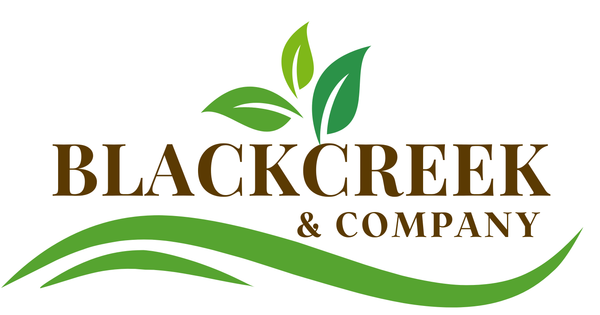
Crafting Herbal Tinctures and Extracts
Share

In the world of natural remedies and herbal medicine, tinctures and extracts play a significant role. These concentrated forms of plants capture their beneficial properties in liquid form, making them convenient to use and store.
Creating your own tinctures and extracts is a rewarding process—you control the ingredients and quality, while often saving money compared to buying pre-made versions.
Benefits of Making Your Own Tinctures & Extracts
Cost-Effective – More affordable than buying pre-made.
Customization – Adjust herbs and concentrations to suit your needs.
Quality Control – Ensure purity by using high-quality herbs and solvents.
What is a Tincture?
A tincture is a concentrated liquid extract made with alcohol as the solvent. The alcohol draws out and preserves the active compounds from the herbs.
Tinctures are typically taken orally, often by adding a few drops to water, tea, or juice.
What is an Extract?
An extract is similar to a tincture but uses a non-alcohol solvent such as vinegar, glycerin, or oil. These are sometimes called glycerites or vinegar extracts and are often chosen by those who avoid alcohol.
How to Make Your Own Tinctures
Ingredients & Supplies
- Dried herbs or plants of your choice (recommended over fresh)
- Alcohol (vodka, brandy, or rum)
- Glass jars with lids
- Cheesecloth or fine mesh strainer (a French press works well)
- Labels & markers
Step 1: Choose Your Herbs
We recommend using dried herbs for a more potent tincture. Fresh herbs contain water, which dilutes the alcohol and results in a weaker extract.
Ratios:
- Dried herbs → 1:5 ratio (herb weight : alcohol volume Example: 10 g dried herb → 50 mL alcohol
- Fresh herbs → 1:2 ratio (herb weight : alcohol volume) Example: 1 g fresh herb → 2 mL alcohol
Why dried herbs are often better:
- Alcohol penetrates dried herbs more efficiently.
- Stronger tinctures can be achieved with dried herbs.
- Dried herbs are more concentrated and shelf-stable (up to 2 years).
- Fresh herbs spoil more quickly.
Step 2: Measure & Combine
Dried herbs: Weigh your dried herbs, place them in the jar, and add alcohol at a 1:5 ratio (1 part herb to 5 parts alcohol).
Fresh herbs: Weigh your fresh herbs, pack them into the jar, and add alcohol at a 1:2 ratio (1 part herb to 2 parts alcohol).
This ensures accuracy and consistency, rather than estimating by jar size.
Step 3: Store & Infuse
Seal the jar tightly and store it in a cool, dark place for several weeks. Shake gently every few days to encourage extraction.
Step 4: Strain & Bottle
After 4–6 weeks, strain out the herbs using cheesecloth, a fine mesh strainer, or a French press. Press or squeeze well to extract all liquid.
Transfer into clean glass bottles and label with the herb name and date.
Step 5: Storage & Usage
Store tinctures in a cool, dark place away from sunlight.
Properly stored alcohol tinctures last 5–10 years.
Use by adding a few drops or dropperfuls to water, tea, or another beverage
How to Make Herbal Extracts (Glycerites)
Ingredients & Supplies
- Fresh or dried herbs
- Vegetable glycerin (100% pure)
- Distilled water (if using dried herbs)
- Glass jar with lid
- Clean spoon, chopstick, or knife for mixing
- Labels & markers
Step 1: Fill Your Jar
- Fresh herbs: Use a 1:2 ratio (herb : glycerin). Chop herbs, pack tightly into the jar (leave ½ inch headspace), and cover fully with glycerin.
- Dried herbs: Use a 1:5 ratio (herb : liquid). Mix 3 parts glycerin + 1 part distilled water, fill jar halfway with dried herbs, then top off with this mixture
Step 2: Mix & Stir
Stir with a spoon or chopstick to remove air bubbles. Add more glycerin (or glycerin/water mix for dried herbs) as needed so herbs are completely covered, with about 1 inch headspace.
Step 3: Seal & Store
Seal tightly and store in a cool, dark place. Shake gently every few days to keep the infusion active.
Step 4: Allow Infusion
Let sit for 4–6 weeks (longer yields a stronger extract). Check periodically to ensure herbs remain submerged.
Step 5: Strain & Bottle
Strain through cheesecloth or a fine mesh strainer. Squeeze herbs well to extract all liquid.
Bottle in dark glass containers and label with herb, type of extract, and date.
Step 6: Storage
Store in a cool, dark place away from sunlight.
Glycerites generally last 2–3 years.
Tips for Success
- Always use sterilized jars and clean utensils.
- Experiment with different herbs and ratios for strength and flavor.
- If using vinegar as a solvent, add honey for taste.
- Always research dosage guidelines for the herbs you are using.
🌿 Tincture Equivalency Guide
Determining how much herb to take is a personal decision—we cannot advise you on dosage. This chart provides a conversion reference to show how much dried herb is present in tincture, depending on the ratio.
If your guidelines recommend 1 teaspoon dried herb per serving, you can use this chart to calculate the tincture equivalent.
Extraction Ratios (Baseline):
1:2 ratio → 1 g herb = 2 mL tincture → 2 mL tincture = 1 tsp dried herb
1:3 ratio → 1 g herb = 3 mL tincture → 3 mL tincture = 1 tsp dried herb
1:5 ratio → 1 g herb = 5 mL tincture → 5 mL tincture = 1 tsp dried herb
⚖️ Average daily tincture use is 3–5 mL, two to three times per day — but always research the recommended serving size for each herb
⚠️ Disclaimer
Our products and information are not intended to diagnose, treat, cure, or prevent any disease or condition.
We do not make nutritional or health claims. Always consult your physician before using herbs, teas, or spices—especially if you are pregnant, nursing, have a pre-existing condition, or are taking medications or supplements.
